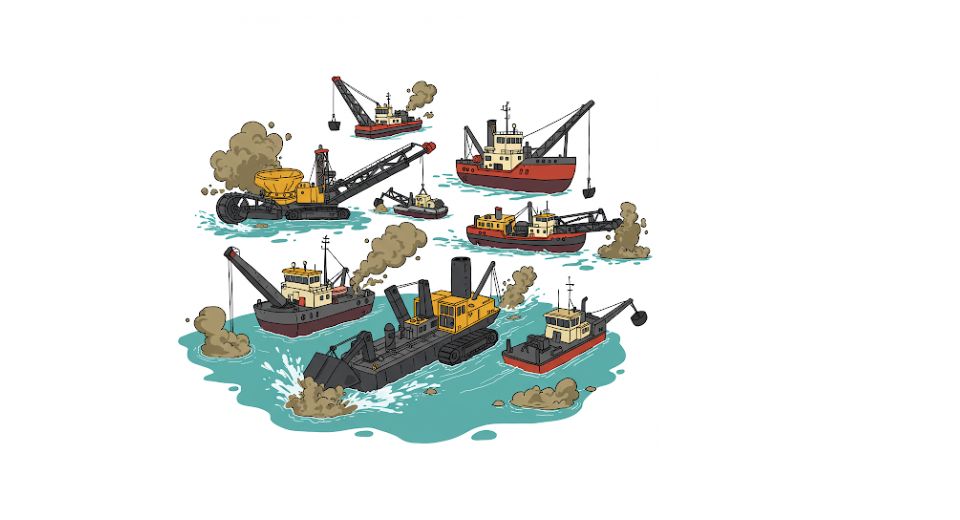
Apr 24, 2025

Metastat Insight publishes a comprehensive report on the Global Dredging Equipment Market, which has attracted much attention owing to subtle changes in industrial demand and regional development strategies. This arena, more often seen in the backdrop of more glamorous maritime and construction sectors when it comes to importance, still remains an important player in developing the infrastructure that promotes global trade and environmentally sustainable coastal management. Regional demands for dredging equipment are increasing through land reclamation and marine route fortification and stabilization against natural erosion and climatic influences, revealing trends that indicate the broader economic movement and infrastructural intent.
Global Dredging Equipment market is estimated to reach $2,548.4 million in 2025 with a CAGR of 5.8% from 2025 to 2032.
Dredging equipment may not be the star of the show in the maritime world, but it remains firmly at home. From deepening ports to accommodate larger vessels to reshaping riverbeds to prevent flooding and creating artificial islands, each application evokes more significant agendas: geopolitical expansion versus coastal urban development. Another outstanding trait of this marketplace is its forward movements, reflecting not only industrial concerns but environmental agendas, strategic interests, and funding opportunities from both public and private sectors. Thus, in making any purchasing and operational decisions in this space, there exists a clear thin line between ecological accountability and developmental ambition.
The ongoing activity in dredging equipment largely corresponds to refurbishing aging infrastructure in ports and waterways. In regions where maritime commerce is booming, especially in parts of Asia and the Middle East, a reinvestment into port capacity and efficiency is being prioritized. This is not just about the bigger container ships and the bulk carriers; this too speaks of reconstructing trade routes, dictated by shifting alliances and evolving economic hubs. In such cases, the machinery used is often tailored to specific geological and hydrological conditions, thereby further diversifying the product landscape and creating pockets of innovation across manufacturers.
On the other hand, environmental regulations hold considerable sway now in Europe and North America, which has attracted a growing focus on equipment with a lower environmental impact on underwater ecosystems. This has played an important role in shaping the design and operation of many contemporary dredging systems, with manufacturers increasingly inclined towards models that operate cleaner, quieter, and with greater precision. With gradual technical advancements, including remote operation or data-driven dredging processes, a consistent, albeit slow conversion of the paradigm can be observed that values calculated, sustainable interventions over brute-force excavation.
Another relatively inconspicuous trend influencing market dynamics is the push for domestic manufacturing in regions where import dependency was regarded as the norm. Geopolitical tensions and supply chain vulnerabilities, revealed in the past couple of years, prompted a greater local production capability interest. The result has been several localized standards for equipment, design preferences, and even material choice. What can be considered a standard in one part of the globe, so to say, might not always find its echo somewhere else, thus adding to the complexity of the worldwide arena for this market.
Demand typically goes through cycles based on available infrastructure funding; however, due to the durability and wear resistance of dredging equipment and the long periods of use offered by these machines, repurchase of the equipment for dredging purposes is less frequent, and customizing service or upgrading has become a lucrative sector of this market. This provides opportunities for aftermarket services, rentals, and refurbishing, especially for small operators who cannot justify the full replacement of equipment. Though subtle, this is a critical change that will have an impact on how manufacturers and service providers present their product offerings.
The intervention of state-backed initiatives influences regional development. State-funded projects particularly in regions with rampant urbanization work big-time for procurement patterns. Programs for massive harbor expansion, inland waterway development, or shoreline protection often spell out procurement modes. While those programs are drafted with regard to national policy, they, in their turn, create ripple effects in the international supply chain for components and technical assistance. In certain cases, government and private partnership led to joint ventures that merge engineering know-how with financial support thus adding another layer to the market structure.
The Global Dredging Equipment Market is, to a more visible extent, a testimony of changing priorities across sectors and geographies, as detailed in the reports from Metastat Insight. The market may not be the one making headlines, yet its movement speaks volumes about construction, environmental considerations, and geopolitical positioning. In this context, the market continues to develop in a relatively steady manner, having undergone changes considered adaptive change: catering to changing needs through a careful mix of innovation, restraint, and strategic foresight.
Drop us an email at:
Call us on:
+1 214 613 5758
+91 73850 57479